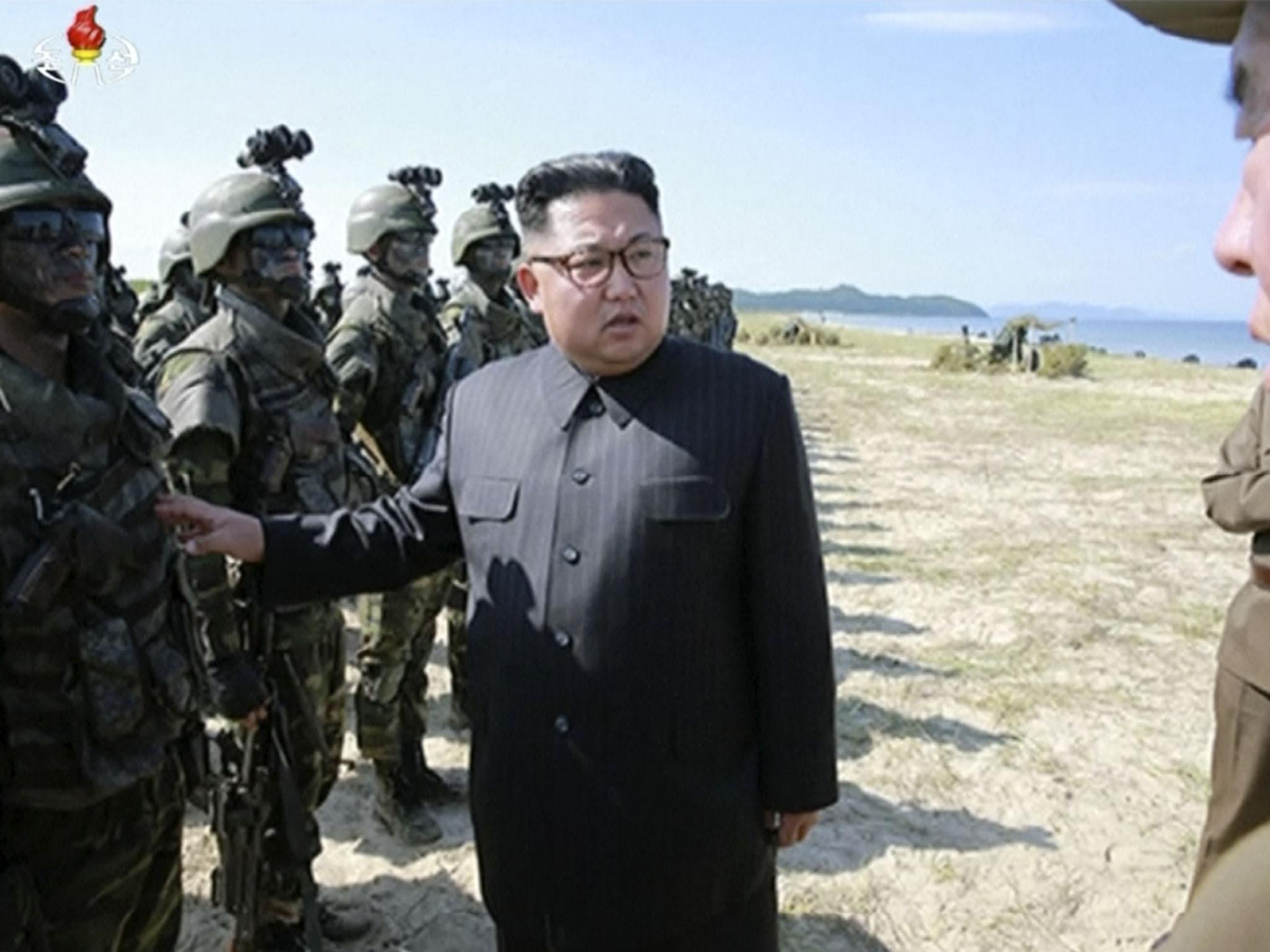North Korea launches three missiles amid US-South Korea military drills
One exploded almost immediately after the launch

Your support helps us to tell the story
From reproductive rights to climate change to Big Tech, The Independent is on the ground when the story is developing. Whether it's investigating the financials of Elon Musk's pro-Trump PAC or producing our latest documentary, 'The A Word', which shines a light on the American women fighting for reproductive rights, we know how important it is to parse out the facts from the messaging.
At such a critical moment in US history, we need reporters on the ground. Your donation allows us to keep sending journalists to speak to both sides of the story.
The Independent is trusted by Americans across the entire political spectrum. And unlike many other quality news outlets, we choose not to lock Americans out of our reporting and analysis with paywalls. We believe quality journalism should be available to everyone, paid for by those who can afford it.
Your support makes all the difference.North Korea fired three short-range missiles into the sea , South Korea and the US said, as the pair conducted their annual military drills.
While the partnership says the exercises help them defend themselves, the isolationist state has long claimed they are preparations for launching nuclear war.
The US military's Pacific Command said it detected three short-range ballistic missiles, fired over a 20 minute period.
Two of the North’s missiles flew about 250km (155 miles) off the country’s east coast, the US military said, while one appeared to explode almost immediately. It was initially thought all of the missiles had failed.
North Korea threatened to surround the American territory of Guam with a “sea of fire” earlier this month, but Pacific Command said neither the US mainland or the island was threatened by the most recent launch.
The act of aggression follows a period of relative calm between the US and the North, with senior American officials praising the communist country for showing restraint by not firing any missiles since the end of July.
North Korea's last missile test on 28 July was for an intercontinental ballistic missile designed to fly 10,000 km (6,200 miles). That would put parts of the US mainland within reach and prompted heated exchanges that raised fears of a new conflict on the Korean Peninsula.
The South Korean Office of the Joint Chiefs of Staff said the projectiles fired on Saturday were launched from the North's eastern Kangwon province into the sea.
Later, the South Korean Presidential Blue House said the North may have fired an upgraded 300-mm calibre multiple rocket launcher, but the military was still analysing the precise details of the projectiles.
Japan's Chief Cabinet Secretary Yoshihide Suga said the missiles did not reach its territory or exclusive economic zone and did not pose a threat to Japan's safety.
The White House said Donald Trump had been briefed about the latest missiles but did not immediately have further comment.
The launches came within days of US Secretary of State Rex Tillerson praising the North with showing restraint by not launching a missile since the July ICBM test.
He said that a path could be opening for dialogue “sometime in the near future”.
Mr Trump also expressed optimism earlier this week about a possible improvement in relations. “I respect the fact that he is starting to respect us,” Mr Trump said of Kim Jong-Un.
North Korea's state media reported on Saturday that Mr Kim had guided a contest of amphibious landing and aerial strike by its army against targets modelled after South Korean islands near the sea border on the west coast.
The official KCNA news agency quoted Mr Kim as telling its Army that it “should think of mercilessly wiping out the enemy with arms only and occupying Seoul at one go and the southern half of Korea.”
Within hours of the launch a new poster on a North Korean propaganda website showed a missile dealing “a retaliatory strike of justice” against the US mainland, threatening to “wipe out the United States, the source of evil, without a trace.”
Mr Kim ordered the production of more rocket engines and missile warheads during a visit to a facility associated with North Korea's ballistic missile programme.
Diagrams and what appeared to be missile parts shown in photographs published in the North's state media suggested Pyongyang was pressing ahead with building a longer-range ballistic missile that could potentially reach any part of the US mainland including Washington.
Reuters contributed to this report
Join our commenting forum
Join thought-provoking conversations, follow other Independent readers and see their replies
Comments